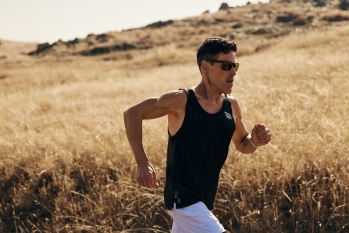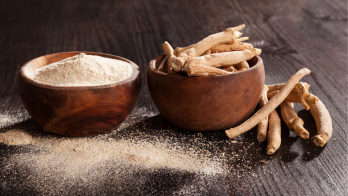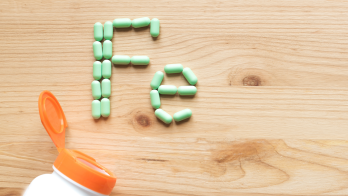How to lose weight as an athlete (without crushing your performance)
If you’re an athlete, slimming down too much or too quickly can hurt your performance and put you at greater risk for injury. Read this guide on how to lose weight as an athlete for seven science-backed strategies that will help you drop some pounds while maintaining your athletic edge.
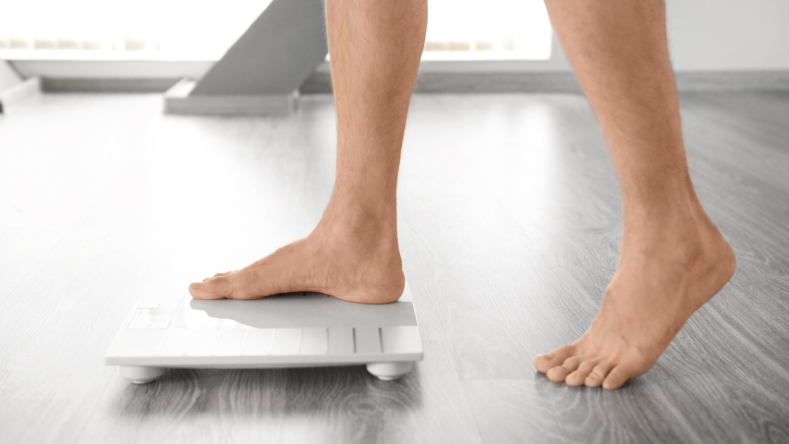
If you’re an athlete, you know you have to be both strong and a healthy weight to perform your best. If you’re carrying around a few extra pounds, slimming down too much or too quickly can not only hurt your performance but put you at greater risk for injury.
But is it possible for an athlete to lose weight without sacrificing performance or risking bodily breakdown? In this guide on how to lose weight as an athlete, we’ll explore how weight loss can affect performance as well as seven science-backed strategies to help you lose weight while maintaining your athletic edge.
How does weight loss affect sports performance?
Weight loss can have both positive and negative effects on sports performance —a lot of which depends on your approach. When done right, research shows gradual weight loss can lead to improvements in both strength and endurance, whereas rapid or excessive weight loss can have the opposite effect [ 1
From a biological perspective, weight loss requires a deficit of calories. Carbohydrates, protein, and fat are the three macronutrients that provide your body with the calories it needs to function and perform its best. During weight loss, however, you’re taking in less energy than you’re expending. In turn, your body relies on its carbohydrate, protein, and fat stores for fuel.
The body stores carbohydrates as glycogen in the muscles and liver and fat in adipose (fat) tissue. The body can't store protein, so during a calorie deficit, it breaks down muscle tissue to get the amino acids it needs to function.
Calorie deficits from carbohydrate restriction can be incredibly effective for weight loss, but research shows extreme carbohydrate restriction can crush performance, particularly in endurance sports like running and cycling [ 2
This leads us to one of the biggest downsides to dropping pounds — the loss of lean body mass (aka muscle) in addition to body fat. Research shows the loss of lean body mass that occurs with weight loss can have several negative implications for athletes, including reduced metabolic rate, strength, and aerobic capacity [ 3 4
The good news is, with proper nutrition and a safe and thoughtful approach, it’s possible to lose weight while minimizing these effects.
7 tips for healthy weight loss for athletes
If you’re an athlete, it’s especially important to approach weight loss the right way, or you run the risk of losing speed and strength or, worse — getting injured. Here are seven science-backed best practices to help you slim down while preserving your performance.
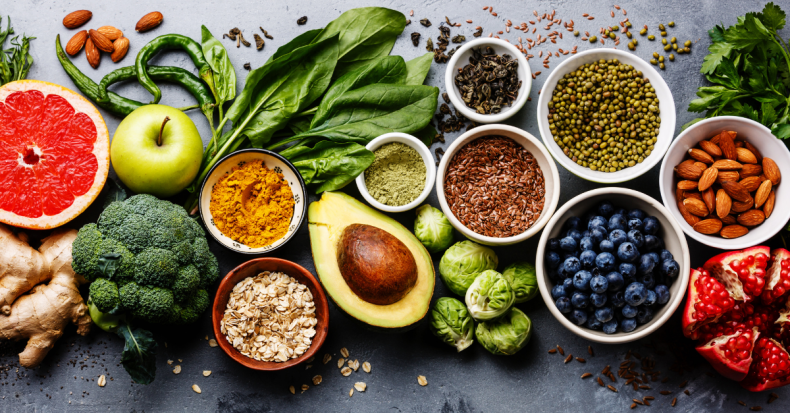
1. Eat more complex carbs.
While cutting too many carbs can crush performance and delay recovery, a modest reduction in carbohydrates (40-45% of daily calories) during off-peak training periods may help you lose weight but won’t leave you running on fumes during workouts.
Cut back first on refined grains and added sugars and focus on filling your plate with plenty of fiber-rich, complex carbohydrates like fruits, vegetables, and whole grains [ 5 [6]
Just don’t cut too many carbs during peak training periods or just before, during, or after a tough workout, as this is when your body needs them the most. Research shows a high carbohydrate diet (60-70% of total energy intake) during weight loss may help maintain performance, whereas not fueling adequately can leave you feeling poorly, hurt your performance, and impede your recovery [ 1
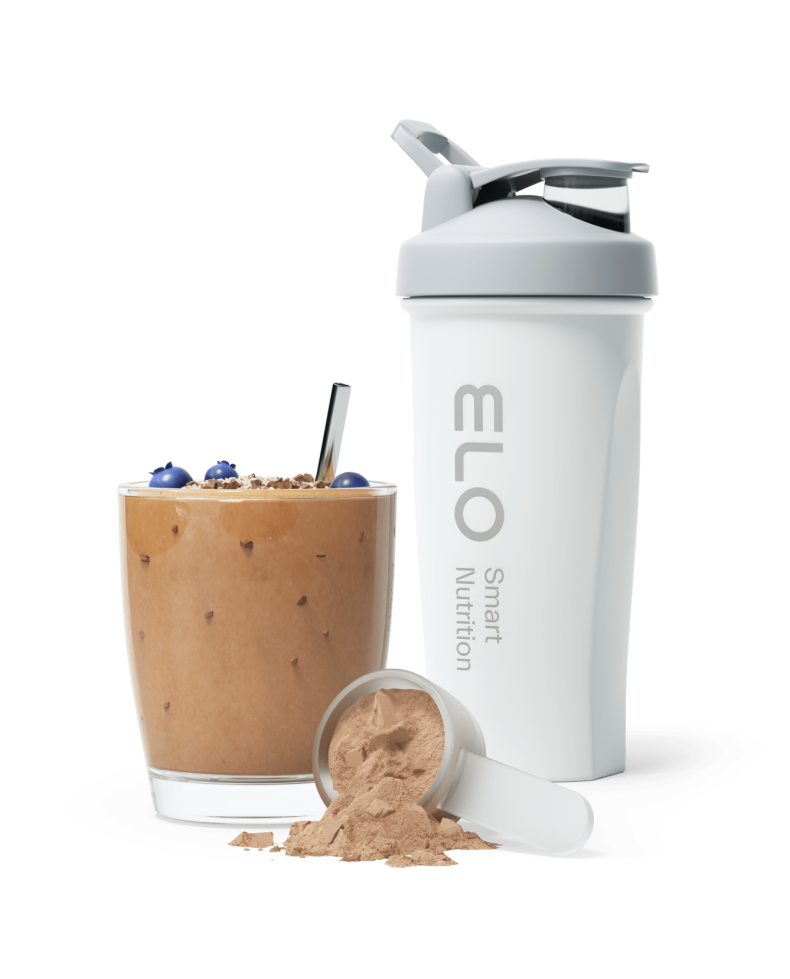
2. Prioritize protein.
A large body of evidence now shows that higher protein intakes during periods of energy restriction can enhance fat-free mass preservation (particularly when combined with exercise), as well as help reduce body weight, fat mass, and waist circumference when you’re trying to lose weight [2 7
Considering these potential benefits and the higher protein needs of athletes, experts recommend a protein intake of 1.8-2.7 g/kg/day for athletes trying to lose weight [ 7 [3]
In addition to eating more quality protein, your intake should be spaced throughout the day. “Protein pacing”, or dividing dietary protein into 4-6 meals or snacks throughout the day with no more than 30-40g of protein per meal/snack, stimulates more muscle protein synthesis and reduces muscle loss with weight loss [ 8 9
You can meet your protein needs through dietary sources or with protein powder, like Elo Smart Protein.

3. Pay attention to pre- and post-workout nutrition.
When you’re trying to lose weight, the timing and composition of your meals become especially important for optimizing performance, training adaptations, and preventing overtraining syndrome [6]
Here are some tips for timing meals and snacks for maximum output while you’re training and rapid recovery afterward [6]
Have a meal 4-6 hours before a tough workout to bolster your glycogen stores.
Consider having a light snack with both carbs and protein 30-60 minutes before longer, or more intense workouts to increase energy and protein availability.
Have a snack or small meal consisting of 1g/kg of carbohydrate and 0.5 g/kg of protein within 30 minutes of finishing a workout to promote muscle synthesis and minimize muscle breakdown.
Staying well hydrated throughout the day—particularly before, during, and right after exercising—will help with weight loss while also helping you feel and perform your best [
1
,6
].
Elo Smart Protein was designed with post-workout nutrition in mind. Each blend is hand-mixed just for you and is optimized to deliver the right amount of protein and key amino acids after each workout to help you recover faster while supporting healthy weight loss. Learn more about Smart Protein, including how we build your blend and why it can help you meet your nutrition and recovery goals here

4. Add regular strength training sessions to your routine.
In addition to upping your protein, make sure to add regular strength training sessions to your routine. Strength training is more effective for building muscle than cardio and also produces an afterburn effect (technically known as excess post-exercise oxygen consumption, or EPOC) that can increase your calorie deficit and promote greater weight loss over time [ 10
Evidence shows that strength training, when paired with adequate protein intake, can preserve lean body mass and minimize reductions in metabolic rate during weight loss [7]
Make sure to incorporate at least 1-2 strength training sessions into your training regimen to build strength, reduce the risk of injury, and maintain lean body mass [9]
5. Save significant weight loss for the off-season.
Losing weight can make training feel more difficult and sometimes hinder performance, especially if it involves loss of lean muscle mass.
For the casual athlete looking to lose a few pounds, you may slim down just by exercising more regularly or training for an upcoming race. Modest weight loss achieved through exercise most likely won’t affect overall performance, providing that you’re eating enough carbs and protein and prioritizing pre- and post-exercise nutrition.
For the more competitive athlete, dieting during peak training season can have some serious consequences. Research shows calorie restriction during training can not only impede performance but lead to significant losses of lean muscle mass, physical and psychological symptoms of overtraining, and illness [6]
For this reason, serious athletes should focus on eating for performance during peak training periods to maximize training effects and to maintain body weight and health. Serious weight loss is best saved for the off-season when energy and performance demands are lower [ 5
6. Take it slow and steady.
Rapid weight loss can have several negative effects on hormones, metabolism, and body composition. While you may hit your weight loss goals faster, large caloric deficits come at a cost, including greater losses of lean body mass and compromised athletic performance and recovery [7]
When you are ready to lose weight, it’s best to approach weight loss as you would your first marathon or century ride — slow and steady(ish).
As you get leaner, slower rates of weight loss can better preserve lean body mass, which is crucial to performance [2]
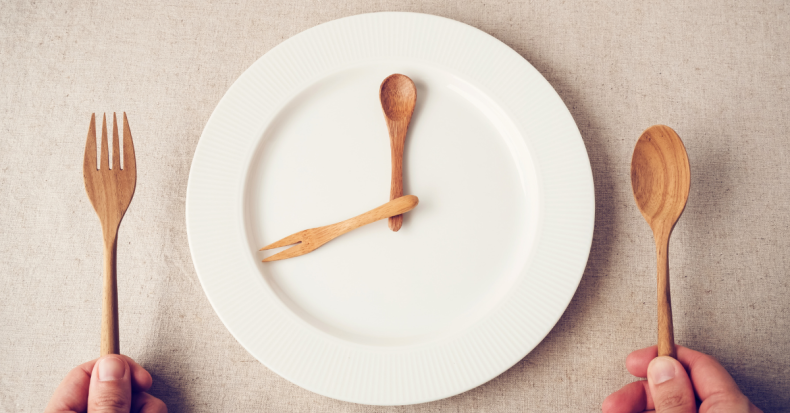
7. Try time-restricted feeding instead of traditional dieting.
Crash diets are a recipe for disaster, but evidence suggests time-restricted feeding (TRF), a form of intermittent fasting, may be better for weight loss than daily calorie restriction.
Studies show intermittent fasting diets, particularly TRF, perform equally to or better than daily calorie restriction for improving body composition [2] [2]
If you’re not familiar, TRF typically involves a 16-20 hour fast followed by a 4-8 hour eating window. Unlike other types of intermittent fasting that involve calorie restriction, time-restricted feeding allows you to eat as much as you want during that 4-8 hour window. Many find time-restricted feeding less restrictive and easier to stick with since all foods are fair game, and a significant portion of the fasting window happens while you sleep.
If you’re interested in experimenting with time-restricted feeding to lose weight, give your body time to adjust. Start with a 10-hour overnight fast and increase as tolerated to 12-16 hours. Ideally, do your workout in the middle of your eating window, so you have some fuel in the tank and can adequately refuel after. If you have diabetes or low blood sugar, chat with your doctor or dietitian about trying TRF safely.
How can high performance athletes lose weight?
High performance athletes can lose weight by:
Creating a calorie deficit of 300-500 calories/day and reducing carbohydrate intake to 40-45% of total calories during off-peak training seasons.
Modestly reducing calorie intake while maintaining a high-carbohydrate, high-protein diet weight during peak training periods [
1
].Consuming 1.8–2.7 g/kg/day of protein [
7
], spreading protein intake throughout the day.Staying well hydrated throughout the day and before, during, and after training.
Incorporating 1-2 resistance exercise sessions/week into their training plan.
Prioritizing pre-and post-workout nutrition (specifically carbohydrates, protein, and fluid intake) to optimize performance and recovery.
Frequently asked questions
Does losing weight affect endurance?
Losing weight does affect endurance. Research shows aerobic endurance capacity decreases after rapid weight loss but might increase after gradual weight loss [ 1
Does losing weight affect strength?
Losing weight affects strength. Research shows muscle strength and anaerobic performance typically decrease after rapid weight reduction, whereas performance is not affected, and strength can increase after gradual weight loss [ 1
How many calories should an athlete eat to lose weight?
An athlete can lose weight by eating 300-500 fewer calories/per day than what their body needs. Slower rates of weight loss can better preserve lean body mass and minimize performance losses, so the lower the calorie deficit and slower the weight loss, the better.
What foods do athletes need to lose weight?
To lose weight, athletes need complex carbohydrates, including whole grains, fruits, and vegetables, and lean protein, like fish, chicken, turkey, eggs, reduced-fat dairy, and tofu, as these foods support both athletic performance and weight loss.
Summary
It is possible to lose weight without sacrificing athletic performance, as gradual weight loss may even lead to improvements in both strength and endurance. If you’re an athlete trying to lose weight, eating more complex carbs and protein while prioritizing strength training and sports nutrition will help minimize decrements in performance. Just remember, serious weight loss should be saved for the off-season, and a slow, sustainable approach will give you the best results.
Disclaimer: The text, images, videos, and other media on this page are provided for informational purposes only and are not intended to treat, diagnose, or replace personalized medical care.
Key takeaways
Low-carbohydrate diets can be incredibly effective for weight loss, but extreme carbohydrate restriction can hinder performance and put you at risk for injury and illness.
Aim to get 1.8-2.7 g/kg of protein/day divided into 4-6 meals or snacks if you’re an athlete trying to lose weight. During the off-season, reduce calories by cutting your carbohydrate intake to 40-45% of your total calories.
Within 30 minutes after a workout, have a snack or small meal consisting of 1g/kg of carbohydrate and 0.5 g/kg of protein to promote muscle synthesis and minimize muscle breakdown.
Go for gradual weight loss and experiment with time-restricted feeding instead of highly restrictive or extreme dieting.
References
Fogelholm M. (1994). Effects of bodyweight reduction on sports performance. Sports medicine (Auckland, N.Z.), 18(4), 249–267.
https://doi.org/10.2165/00007256-199418040-00004
International society of sports nutrition position stand: diets and body composition
https://jissn.biomedcentral.com/articles/10.1186/s12970-017-0174-y
(2017)Trexler, E. T., Smith-Ryan, A. E., & Norton, L. E. (2014). Metabolic adaptation to weight loss: implications for the athlete. Journal of the International Society of Sports Nutrition, 11(1), 7.
https://doi.org/10.1186/1550-2783-11-7
Weiss, E. P., Jordan, R. C., Frese, E. M., Albert, S. G., & Villareal, D. T. (2017). Effects of Weight Loss on Lean Mass, Strength, Bone, and Aerobic Capacity. Medicine and science in sports and exercise, 49(1), 206–217.
https://doi.org/10.1249/MSS.0000000000001074
Sport nutrition: A review of the latest guidelines for exercise and sport nutrition from the American College of Sport Nutrition, the International Olympic Committee and the International Society for Sports Nutrition (2013)
https://www.tandfonline.com/doi/abs/10.1080/16070658.2013.11734434
Kreider RB, Wilborn Cd, Taylor L, et al. ISSN exercise and sport nutrition review: research and recommendations. Int J Soc Sports Nutr. 2010;7:7 [homepage on the Internet]. c2012. Available from:
http://www.biomedcentral.com/content/pdf/1550-2783-7-7.pdf
Murphy, C. H., Hector, A. J., & Phillips, S. M. (2015). Considerations for protein intake in managing weight loss in athletes. European journal of sport science, 15(1), 21–28.
https://doi.org/10.1080/17461391.2014.936325
Moore, D. R., Areta, J., Coffey, V. G., Stellingwerff, T., Phillips, S. M., Burke, L. M., Cléroux, M., Godin, J. P., & Hawley, J. A. (2012). Daytime pattern of post-exercise protein intake affects whole-body protein turnover in resistance-trained males. Nutrition & metabolism, 9(1), 91.
https://doi.org/10.1186/1743-7075-9-91
Iwao, S., Mori, K., & Sato, Y. (1996). Effects of meal frequency on body composition during weight control in boxers. Scandinavian journal of medicine & science in sports, 6(5), 265–272.
https://doi.org/10.1111/j.1600-0838.1996.tb00469.x
Schuenke, M. D., Mikat, R. P., & McBride, J. M. (2002). Effect of an acute period of resistance exercise on excess post-exercise oxygen consumption: implications for body mass management. European journal of applied physiology, 86(5), 411–417.
https://doi.org/10.1007/s00421-001-0568-y

